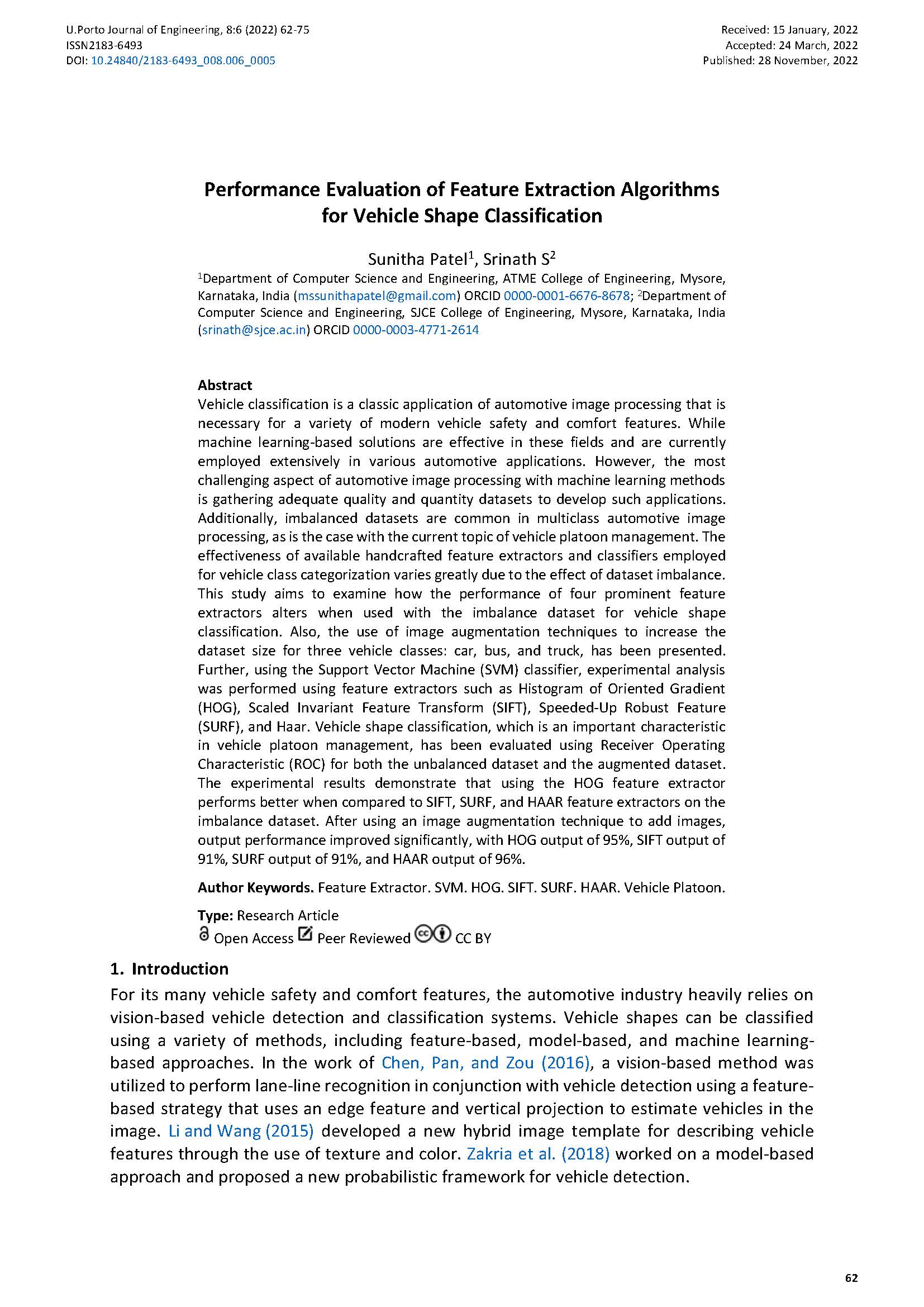Performance Evaluation of Feature Extraction Algorithms for Vehicle Shape Classification
Main Article Content
Abstract
Vehicle classification is a classic application of automotive image processing that is necessary for a variety of modern vehicle safety and comfort features. While machine learning-based solutions are effective in these fields and are currently employed extensively in various automotive applications. However, the most challenging aspect of automotive image processing with machine learning methods is gathering adequate quality and quantity datasets to develop such applications. Additionally, imbalanced datasets are common in multiclass automotive image processing, as is the case with the current topic of vehicle platoon management. The effectiveness of available handcrafted feature extractors and classifiers employed for vehicle class categorization varies greatly due to the effect of dataset imbalance. This study aims to examine how the performance of four prominent feature extractors alters when used with the imbalance dataset for vehicle shape classification. Also, the use of image augmentation techniques to increase the dataset size for three vehicle classes: car, bus, and truck, has been presented. Further, using the Support Vector Machine (SVM) classifier, experimental analysis was performed using feature extractors such as Histogram of Oriented Gradient (HOG), Scaled Invariant Feature Transform (SIFT), Speeded-Up Robust Feature (SURF), and Haar. Vehicle shape classification, which is an important characteristic in vehicle platoon management, has been evaluated using Receiver Operating Characteristic (ROC) for both the unbalanced dataset and the augmented dataset. The experimental results demonstrate that using the HOG feature extractor performs better when compared to SIFT, SURF, and HAAR feature extractors on the imbalance dataset. After using an image augmentation technique to add images, output performance improved significantly, with HOG output of 95%, SIFT output of 91%, SURF output of 91%, and HAAR output of 96%.
Downloads
Article Details

This work is licensed under a Creative Commons Attribution 4.0 International License.
Authors who publish with this journal agree to the following terms:
- Authors retain copyright and grant the journal right of first publication with the work simultaneously licensed under a Creative Commons Attribution License that allows others to share the work with an acknowledgement of the work's authorship and initial publication in this journal.
- Authors grant the journal the rights to provide the article in all forms and media so the article can be used on the latest technology even after publication and ensure its long-term preservation.
- Authors are able to enter into separate, additional contractual arrangements for the non-exclusive distribution of the journal's published version of the work (e.g., post it to an institutional repository or publish it in a book), with an acknowledgement of its initial publication in this journal.
- Authors are permitted and encouraged to post their work online (e.g., in institutional repositories or on their website) prior to and during the submission process, as it can lead to productive exchanges, as well as earlier and greater citation of published work (See The Effect of Open Access).

